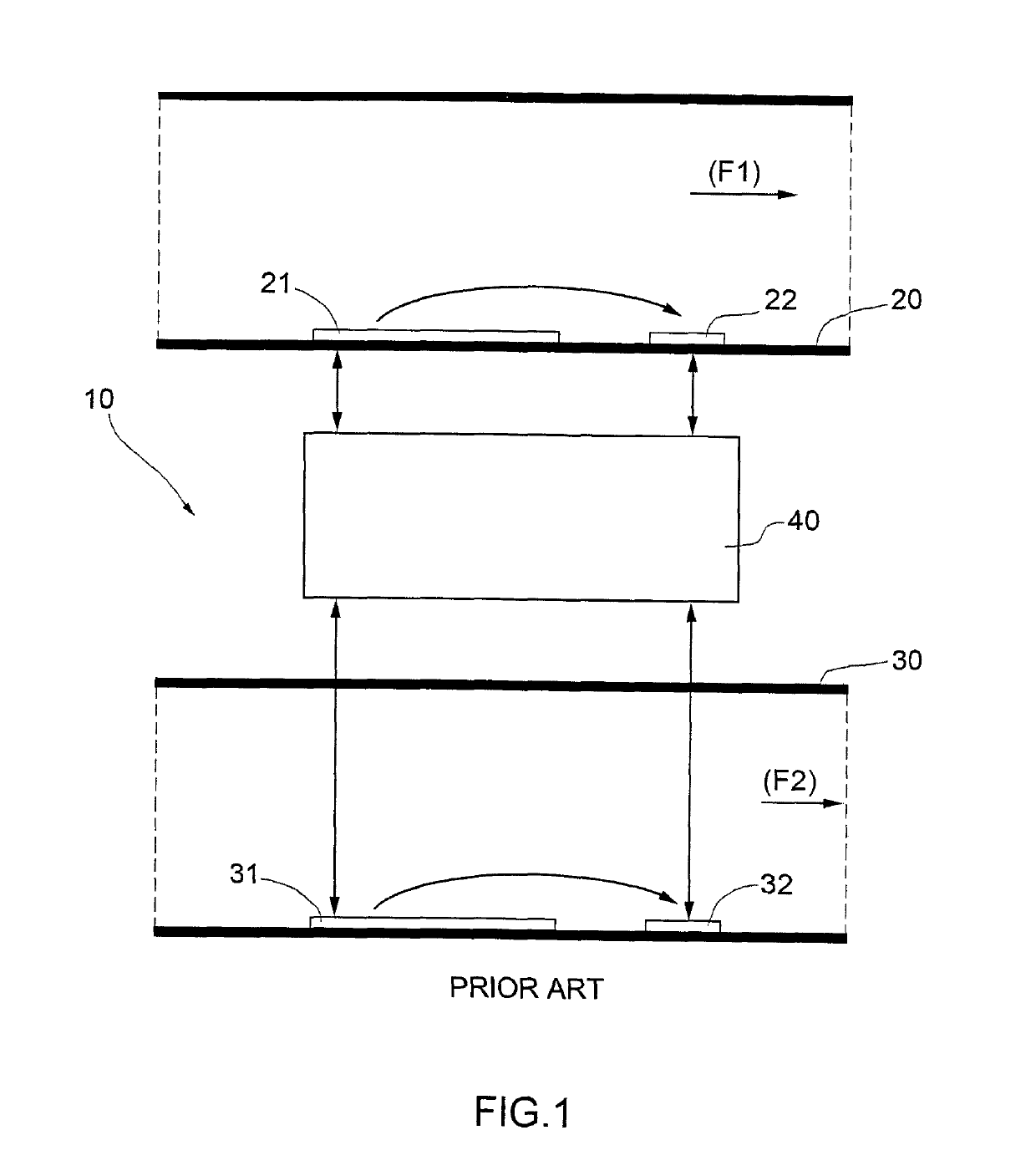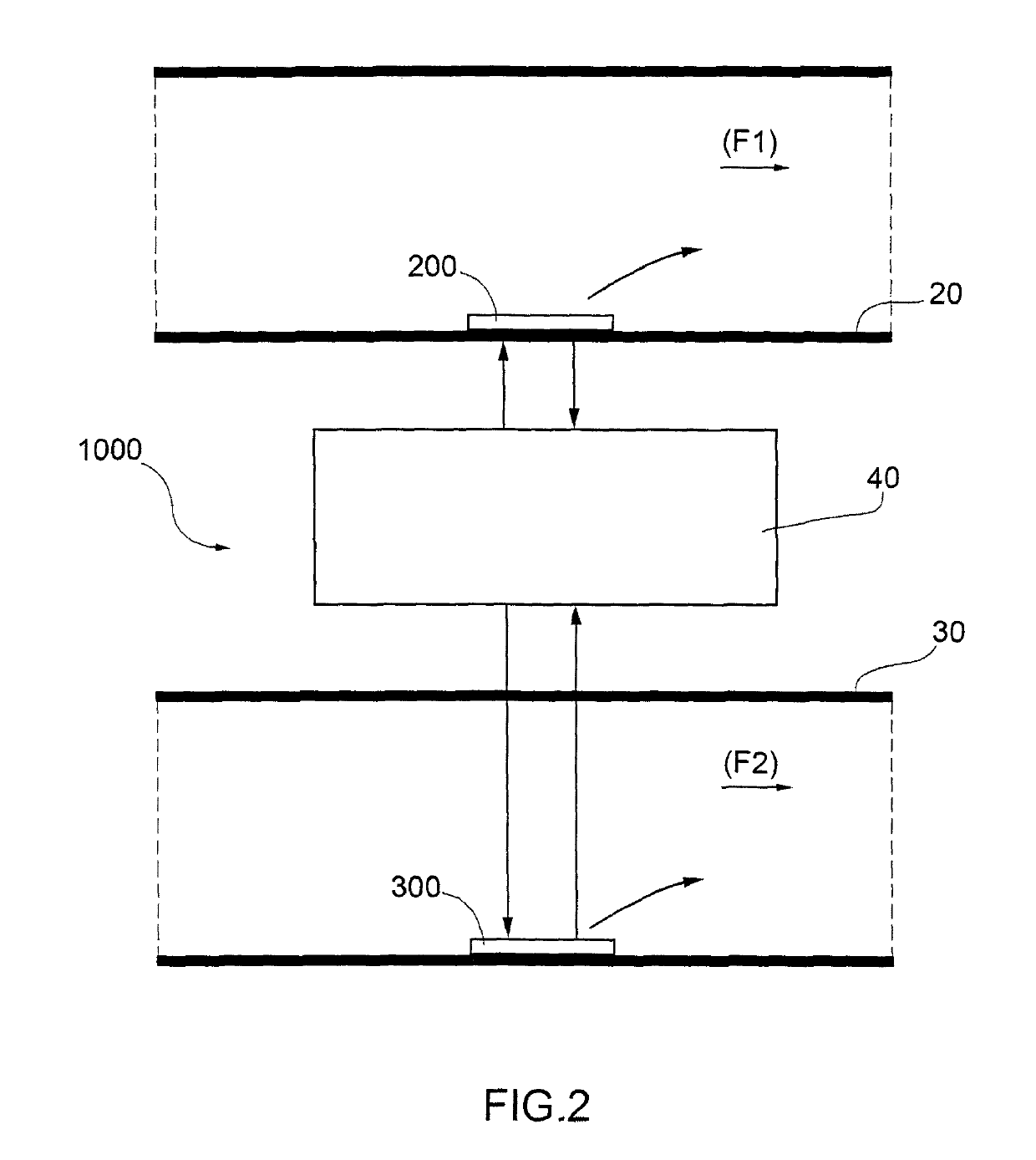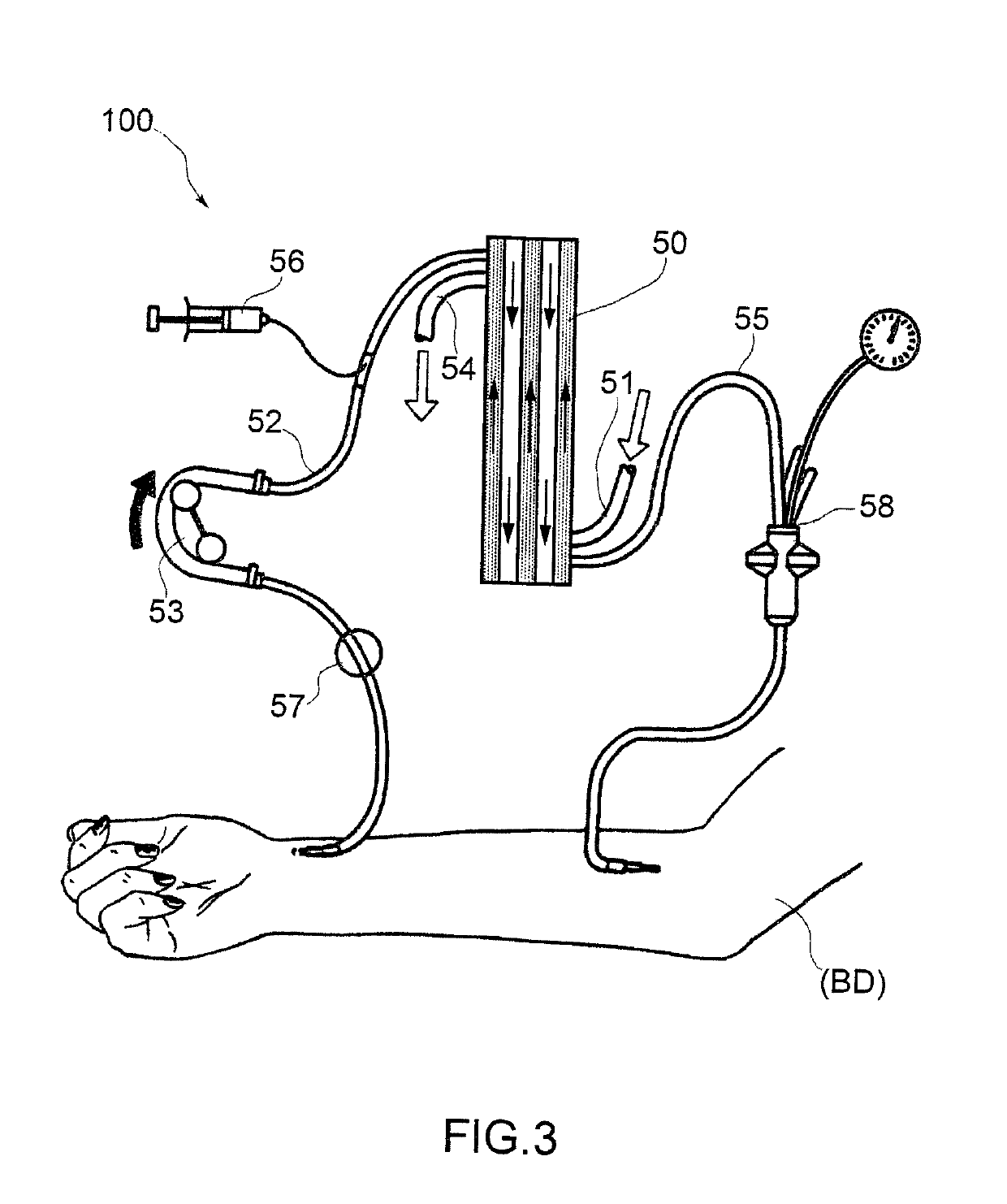Differential flow-meter for measuring the weight loss in haemodialysis treatments
a flowmeter and weight loss technology, applied in the field of differential flowmeters, can solve the problems of obtaining greater measurement accuracy and precision, and achieve the effect of high sensitivity and precision and ensuring measurement accuracy
- Summary
- Abstract
- Description
- Claims
- Application Information
AI Technical Summary
Benefits of technology
Problems solved by technology
Method used
Image
Examples
Embodiment Construction
[0040]In FIG. 21000 indicates, as a whole, a differential flow-meter using the principle of the thermal anemometer flow-meter, which is one of the objects of the present invention.
[0041]The differential flow-meter 1000 comprises a first separate channel 20 and a second separate channel 30 in which two fluids flow, said fluids being same or different.
[0042]A thermal device 200 is attached on the inner wall of channel 20. In said device 200, the temperature sensor 22 seen in FIG. 1 corresponds in principle to the heating plate 21. In particular, it is a resistor overheated thanks to the Joule effect, namely by imposing a suitably high current, with the resulting resistance increase, said resistor being cooled by the moving fluid, with the resulting temperature decrease. Therefore this resistance variation is inversely proportional to the fluid flow rate.
[0043]Analogously, a thermal device 300 is attached on the inner wall of channel 30. In said device 300, the temperature sensor 32 se...
PUM
 Login to View More
Login to View More Abstract
Description
Claims
Application Information
 Login to View More
Login to View More - R&D
- Intellectual Property
- Life Sciences
- Materials
- Tech Scout
- Unparalleled Data Quality
- Higher Quality Content
- 60% Fewer Hallucinations
Browse by: Latest US Patents, China's latest patents, Technical Efficacy Thesaurus, Application Domain, Technology Topic, Popular Technical Reports.
© 2025 PatSnap. All rights reserved.Legal|Privacy policy|Modern Slavery Act Transparency Statement|Sitemap|About US| Contact US: help@patsnap.com



